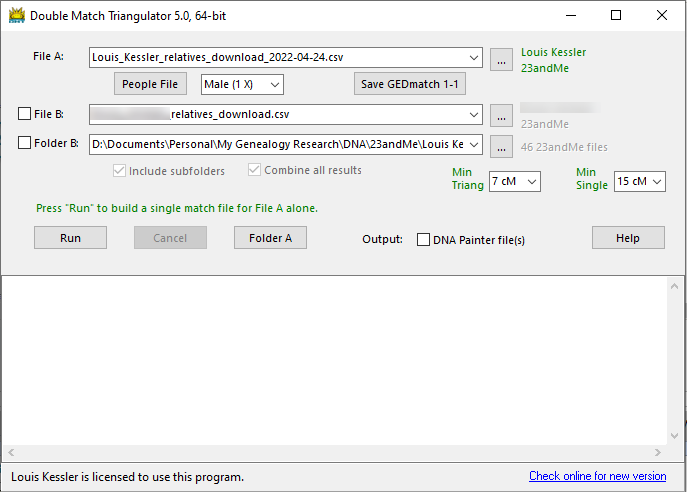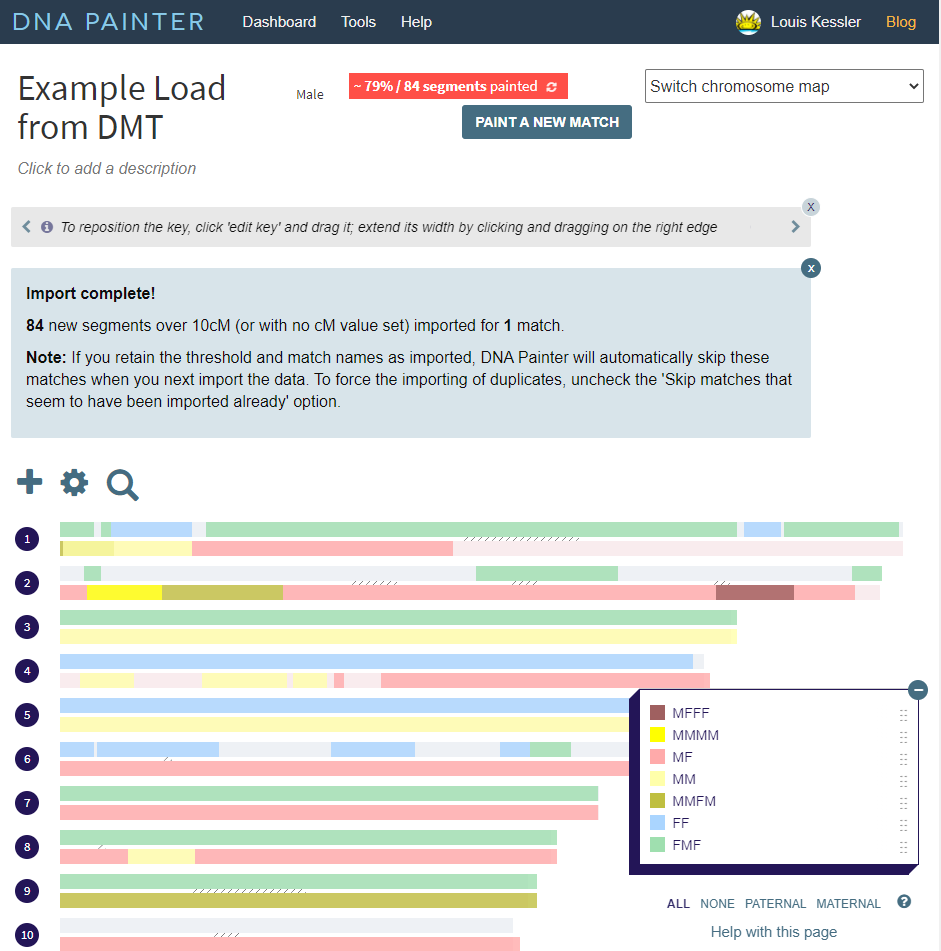Yesterday, I released new version of Double Match Triangulator. This took longer than I hoped, but finally it’s out.
In late November, GEDmatch changed the format of their segment match file and also made a change to their one-to-one report, so DMT needed to be updated to handle those.
Also in May 2019, MyHeritage changed their segment match files to include a unique ID for each person. DMT now uses the name plus part of that ID so that like GEDmatch, two people with the same name will be differentiated.
But the biggest changes are under the hood. I reviewed most of DMTs internals and geared it to give you as much of the information and assumptions that you can make from your data.
DMT’s interface now looks like this:

The only change to the interface is the addition of a Male (1 X) / Female (2 X) selector. The selection will be reflected in the number of X chromosomes DMT includes in the results. DMT now knows that for males, ancestral paths on the mother’s side are the only one allowed. And it understands that no ancestral path on the X can go through two F (fathers) in a row.
I also found and fixed a bug that was causing the Map page to take 10 times longer to generate than it needed to.
DMT, Painting and Clustering
Double Match Triangulator works differently than all the other autosomal DNA tools. By comparing all the segment matches of two or more people, DMT determines every single triangulation between the people whose files you have.
The addition of user-entered Most Recent Common Ancestors (MRCAs) in DMT version 3 allowed DMT to take the next step and allow painting of ancestral paths to segments. This is exactly what you do manually with DNA Painter, except that with DNA Painter, you are only adding single matches. DMT used triangulations and makes use of the fact that segments that don’t triangulate likely are on the opposite parent as those that do triangulate.
DMT also calculates all possible inferred matches, where Person B matches Person C but Person A does not. Basically, these refute the ancestral line towards the more distant MRCA of Persons B and C. .
Put those together, and you can get most of your genome painted fairly easily. DMT will create a file for you that you can input into DNA painter. For example, if you know 11 MRCAs and have their segment match files, this is what the results might look like when uploaded to DNA Painter:

Other autosomal analysis tools that do clustering have become available in the past few years. DMT does clustering as well. It does so by using the most common ancestral path of a person’s segments to be the cluster for the person.
With those 11 MRCAs in the above example, DMT places people into the following clusters:
In this example, almost half the people got assigned to a cluster on either the father (F) or mother (M)’s side. For people who you don’t know your relationship to, this will be a great clue as to which ancestral line you should look at first.
DMT is Available at:
The new version 4 of DMT can be found on the DMT website: www.doublematchtriangulator.com
For those of you who have already purchased DMT ($40 USD) it is as it always will be a free upgrade. Simply download and install it.
For those who haven’t, please feel free to try the program. The download is fully functional but only shows you results for chromosome 1. That should be enough to give you a good feeling for what it can do.

